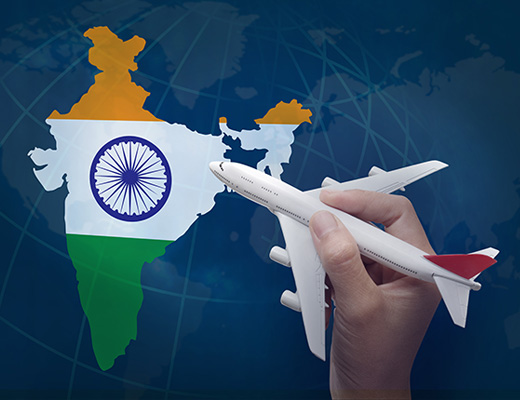Air France-KLM Is Eager To Extend Codeshare Routes With Indigo.
Our country is one of the world's fastest-growing aviation lands, with Air France-KLM Group projecting one million passengers on Indian routes by 2022.

According to top officials, Air France-KLM is eager to grow routes and capacity, as well as increase codeshare flights with IndiGo, in the “booming” Indian aviation industry. Air France-KLM provides up to 46 weekly flights linking four Indian cities: Delhi, Mumbai, Bengaluru, and Chennai, with a 22% increase in seat capacity compared to 2022.
It also has a codeshare deal with IndiGo, the country’s leading airline, for over 30 locations. They intend to expand with IndiGo and enhance capacity and routes. The goal is to increase international flights, according to Claude Sarre, General Manager – India Subcontinent of Air France-KLM. Plans in this regard are being discussed, he noted. Codesharing allows an airline to book passengers on partner airlines and provide smooth travel to locations where it does not have a presence.

Our country is one of the world’s fastest-growing aviation lands, with Air France-KLM Group projecting one million passengers on Indian routes by 2022. Sarre stated that the “aviation industry is booming in India” following the coronavirus outbreak.
KLM Royal Dutch Airlines inaugurated the ‘premium comfort class’ on flights between several Indian cities and Amsterdam earlier last week. The airline belongs to the Air France-KLM Group. The event emphasises the significance of India as a critical market for KLM. According to the airline, the new premium comfort class will be offered on flights from Bengaluru, Delhi, and Mumbai to Amsterdam and other locations on KLM’s worldwide network. According to Christiaan van de Kopple, Commercial Director India subcontinent Air France-KLM, travellers are demanding more and more excellence and are willing to pay more.
According to Sarre, the expansion reinforces Air France-KLM’s position as a global network carrier with an appealing and diverse variety of onboard products. A 22% increase in seat capacity (relative to 2022) on Indian routes demonstrates that India is an important market for Air France KLM. They are adaptable in their use of our planes, and on India routes, he added. Furthermore, with its young fleet, the business is attempting to cut fuel use.

Air France-KLM is a prominent international air transport player. According to its website, the group’s global network includes flights to over 300 locations served by Air France, KLM Royal Dutch Airlines, and Transavia.
The aura of the Indian aviation sector.
India is the world’s third-largest and one of the fastest-growing aviation markets. When discussing the Indian aviation business, Sarre stated that DigiYatra is a commendable project and highlighted the significance of promoting and producing Sustainable Aviation Fuel. KLM, the airline, operated using 1% Sustainable Aviation Fuel (SAF) in 2022, with plans to raise the amount to 10% in 2030 and 63% in 2050.
DigiYatra’s major goal is to improve passenger experience by reducing the requirement for ticket and ID verification at many contact points and to provide improved passenger mobility across existing infrastructure utilising a digital framework. It will result in faster passenger flow, paperless travel, more security, and better airport infrastructure.
With the addition of more than 70 airports over the last eight years, India has experienced a V-shaped resurgence in the aviation industry.

Conclusion.
While the industry is reaching new heights by the day, it has also seen instability and multiple doomsdays in the last two years. In a world where it was difficult to envision a day without flying, airports, airspace, and borders were closed, and fleets were grounded, disrupting the global supply chain, costing millions of jobs, and making civil aviation one of the pandemic’s hardest impacted industries. However, the sheer tenacity of the business, its players, and the government’s implementation of several unproven but new policies enabled the industry to transition into an ecosystem.
It is an ecosystem based on the pillars of resilience, robustness, and restart — which gradually began to show green shoots of development and sparked cautious optimism among investors, governments, and regulators about prospects, particularly in a country with a large domestic market like India.
Proofread & Published By Naveenika Chauhan






